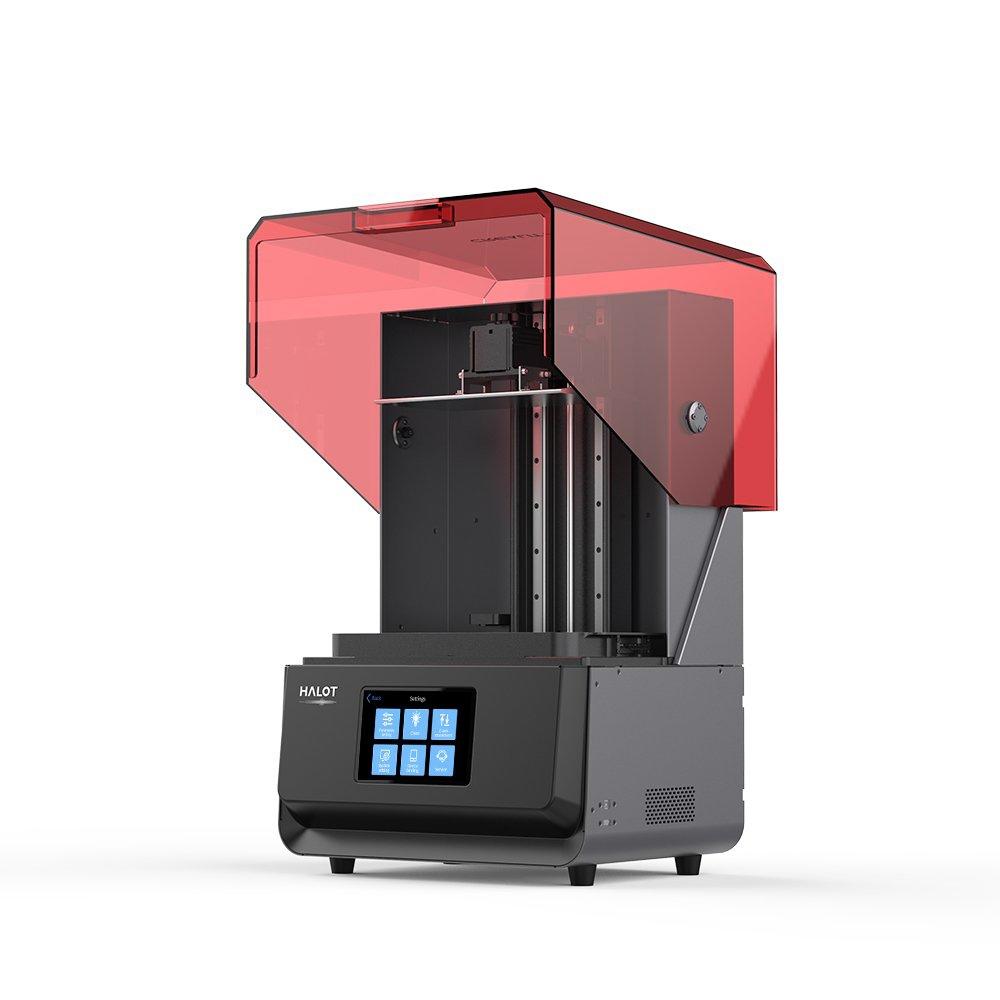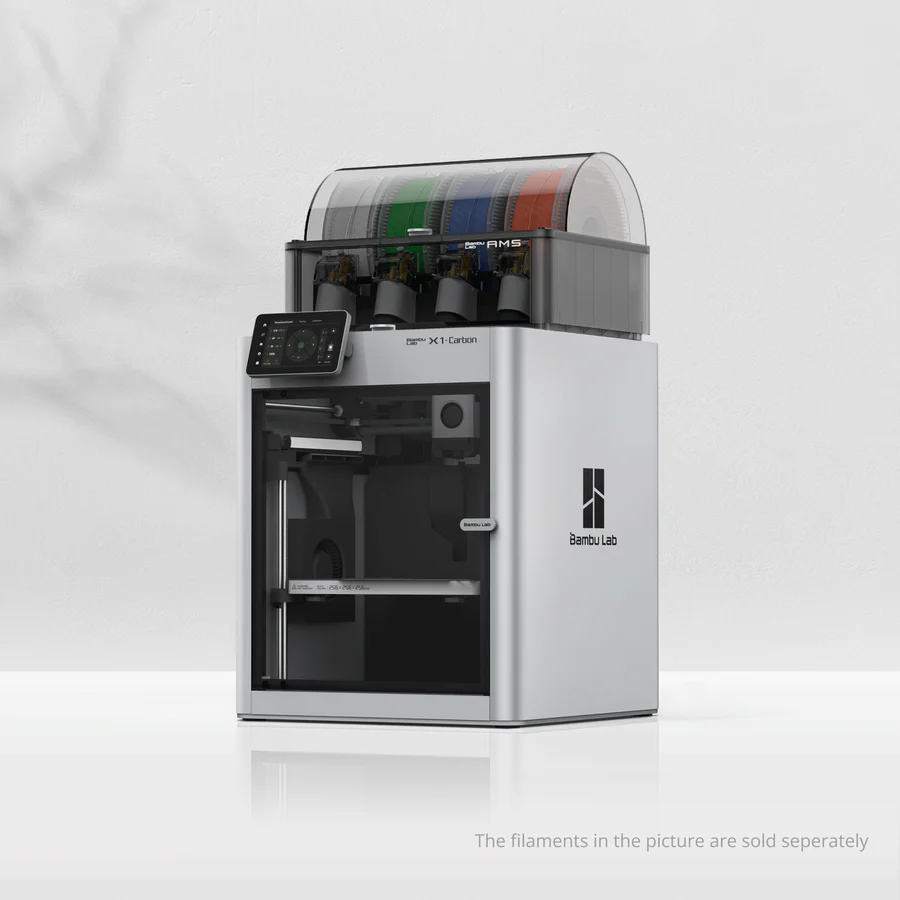Compare Halot Max vs X1 carbon
Comparison between the best 3D printers
Choose the best 3D printer at the best price. The cheapest 3D printers are here.
Buy a 3D printer here with 3D Fila.
 |
 |
|
| Model | Halot Max[BUY Halot Max] |
X1 carbon |
| Printing Material | Resin | Filament |
| Buy Resin for Creality 3D Halot Max | Buy Filament forBambu Lab X1 carbon | |
| Estimated price | $3000,00 | $1449,00 |
| Manufacturer | Creality 3D | Bambu Lab |
| Release Year | 2021 | 2023 |
| Print Volume [mm] | 293x165x300 | 256x256x256 |
| Printer Size [mm] | 480x387x770 | 389x389x457 |
| Weight [kg] | 32,5 | 14,13 |
| Power Loss Recovery | NO | YES |
| Maximum Resolution [mm] | 0,03 | 0,1 |
| Processor | Quad ARM A7 1.2 GHz | |
| Display | Display touchscreen 5'' | Touchscreen 5'' |
| Power Supply | 350 W | |
| Connectivity | SD / USB / Wi-Fi | Wifi, Bambu bus, Cartão SD |
| Operating systems | Windows, Mac, Linux | Windows, Linux, Macbook |
| Date of registration in the system | 2022-11-04 | 2024-04-10 |
| Release date | 2021 | 2023 |
| Extra features | The Halot Max printer stands out for its large print size (293 x 165 x 300 mm) and uses SLA technology. It has an integral light source for improved accuracy and a strong core with an advanced operating system. Its Z-axis module ensures high precision, supported by efficient slicing software. The machine offers online OTA updates and boasts an adjustable layer thickness between 10 and 200 microns. Its XY-axis resolution is 3840*2160, with 0.05 mm accuracy, and an integral 405nm light source. The printer includes a 5" touchscreen and multiple connectivity options, such as USB, Creality Cloud, and HALOT BOX WiFi. With cutting-edge technology, the Halot Max is ideal for printing small models with uniform precision, thanks to its self-developed lighting system and stable printing mechanism, which includes dual linear guides, ball screws, and an intelligent brake system. | The Bambu Lab X1 Carbon revolutionizes 3D printing with stunning design, high print speeds, and a streamlined user experience. It stands out with its CoreXY system, a hotend capable of reaching 300°C, allowing for a wide range of filaments. Its LiDAR-assisted bed leveling system, vibration compensation, and AMS multicolor printing capability raise the industry standard. Print quality is impressive, with the ability to fine-tune for perfection. The X1 Carbon, with its closed build volume, not only promises but also delivers one of the most advanced 3D printing experiences available to consumers. |
| Support for multiple colors and materials (AMS and CFS) | NO | YES |
Notes * |
||
| Cost-benefit | 5 / 10 | 7 / 10 |
| Hardware | 1 / 10 | 5.6 / 10 |
| Tela | . | . |
| Print volume | 3 / 10 | 4 / 10 |
| Performance | 9 / 10 | 4 / 10 |
| [BUY Halot Max] |
Conclusion |
| In comparing the **Creality 3D Halot Max** and the **Bambu Lab X1 Carbon**, several key differences emerge that can guide potential buyers based on their specific needs and budget considerations. The Halot Max, priced higher, excels in features aimed at producing highly detailed prints with its superior resolution and larger print volume. Its SLA technology and advanced lighting system make it ideal for intricate models, and it offers a robust design tailored for precision. However, its lack of power loss recovery and limited material compatibility may restrict its utility for some users. On the other hand, the X1 Carbon, while more affordable, boasts impressive capabilities that cater to a broader range of printing needs. With a closed build volume and features like LiDAR-assisted bed leveling and multi-material support, it promises enhanced ease of use and flexibility. Its CoreXY design and higher print speeds are significant advantages for users looking for efficiency and versatility. Ultimately, the choice between these two 3D printers comes down to individual priorities: the Halot Max is ideal for those who prioritize high-resolution, detailed prints and are willing to invest more, while the X1 Carbon offers a compelling combination of performance, versatility, and cost-effectiveness that may better suit hobbyists and professionals seeking an all-around efficient printing solution. Thus, for users emphasizing cost-benefit, the Bambu Lab X1 Carbon emerges as a more favorable option, whereas the Halot Max stands out for specialized high-detail printing tasks. |

